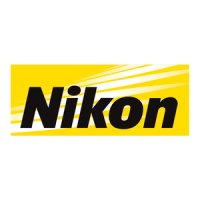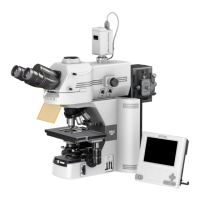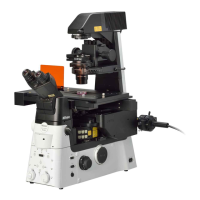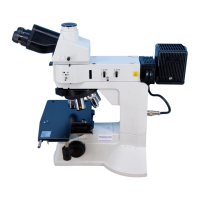Chapter 2 Individual Operations
48
Chapter 2
Individual Operations
Using the GIF filter
The GIF filter (green interference filter) improves the contrast when placed in the optical path. The filter should be installed on
the field lens, or placed inside or on top of the filter cassette holder. Note, however, that it may cause ghosting when mounted
inside the filter cassette holder.
Phase turret condenser
Phase contrast microscopy requires a phase turret condenser equipped with a Ph annular diaphragm. Matching the Ph
annular diaphragm and the phase plate of the Ph objective correctly provides a phase contrast effect.
■ Ph code
One of the Ph codes, [Ph1], [Ph2], or [Ph3] is indicated on the Ph objective depending on the size of the phase plate.
(Ph codes have nothing to do with the magnification of the objective.) Always use a Ph objective and Ph annular
diaphragm with the same Ph code. You cannot experience the phase effect if a different combination of the codes
might be used.
■ Centering of the annular diaphragm and the phase plate
The position of each condenser diaphragm in the condenser turret have already been adjusted based on the Ph1
annular diaphragm. Usually, once centered with Ph1, further centering is not required upon switching to another
magnification. However, the phase contrast image will differ slightly depending on how the annular diaphragm
overlaps the phase plate, thus for a stricter observation or capturing of still images, check whether the annular
diaphragm and the phase plate are concentric at each magnification. In addition, slightly decentering the annular
diaphragm and the phase plate will produce a shadowing effect, resulting in a stereo image. Use this method as
appropriate for the specimen.
■ Infrared ray blocking filter (Ci-S only)
The lamphouse is equipped with an infrared ray cut filter, which reduces the infrared ray component of the
illumination to protect live specimens from being damaged by the heat from the illuminator.
Notes on using the phase turret condenser
● Microscopy is possible with an objective of 4x or greater, but UW microscopy with the 4x objective will cause
vignetting.
● When the phase turret condenser is set to [A: empty], its performance is equivalent to that of the Abbe
condenser.
Combining with an epi-fluorescence attachment
When the epi-fluorescence and phase contrast attachments are attached to the microscope, it is possible to use
epi-fluorescence and phase contrast microscopy in combination. This allows for compensation of each method's
shortcomings, for example, by making it possible to find the target using the phase contrast method instead of the
epi-fluorescence method that is likely to degrade the color of the specimen or by using both microscopy concurrently.
See Chapter 1 “2.2 Phase Contrast Microscopy Procedure” for the phase contrast microscopy procedure and Chapter 1
“5.2 Epi-fluorescence Microscopy Procedure” for the epi-fluorescence microscopy procedure. When switching between
microscopy methods, note the following.
To switch to epi-fluorescence microscopy
● Turn the condenser turret until the [C: Shutter] symbol comes to the front.
● Insert the desired excitation filter cube into the optical path.
● Open the shutter for the epi-fluorescence attachment.

